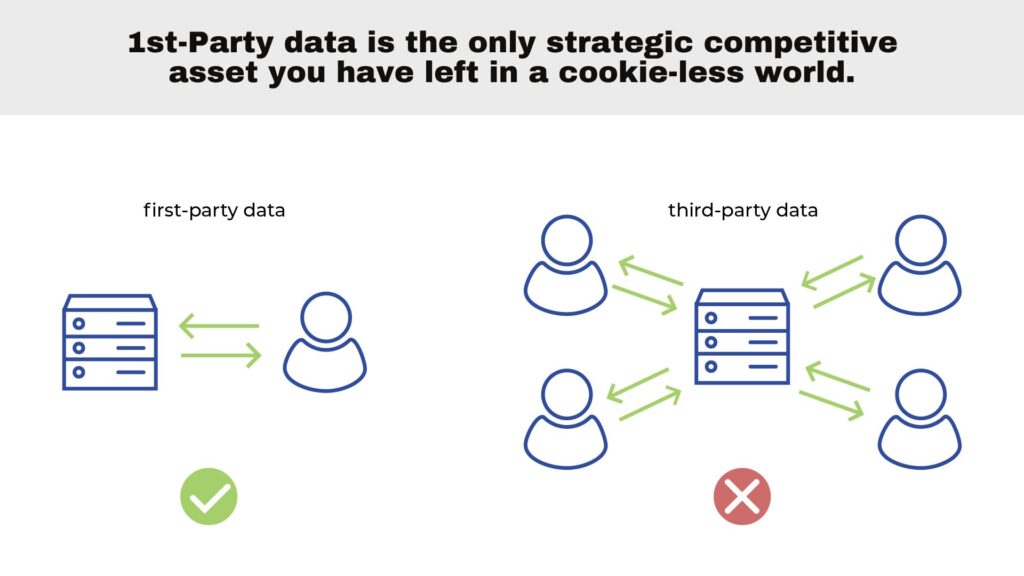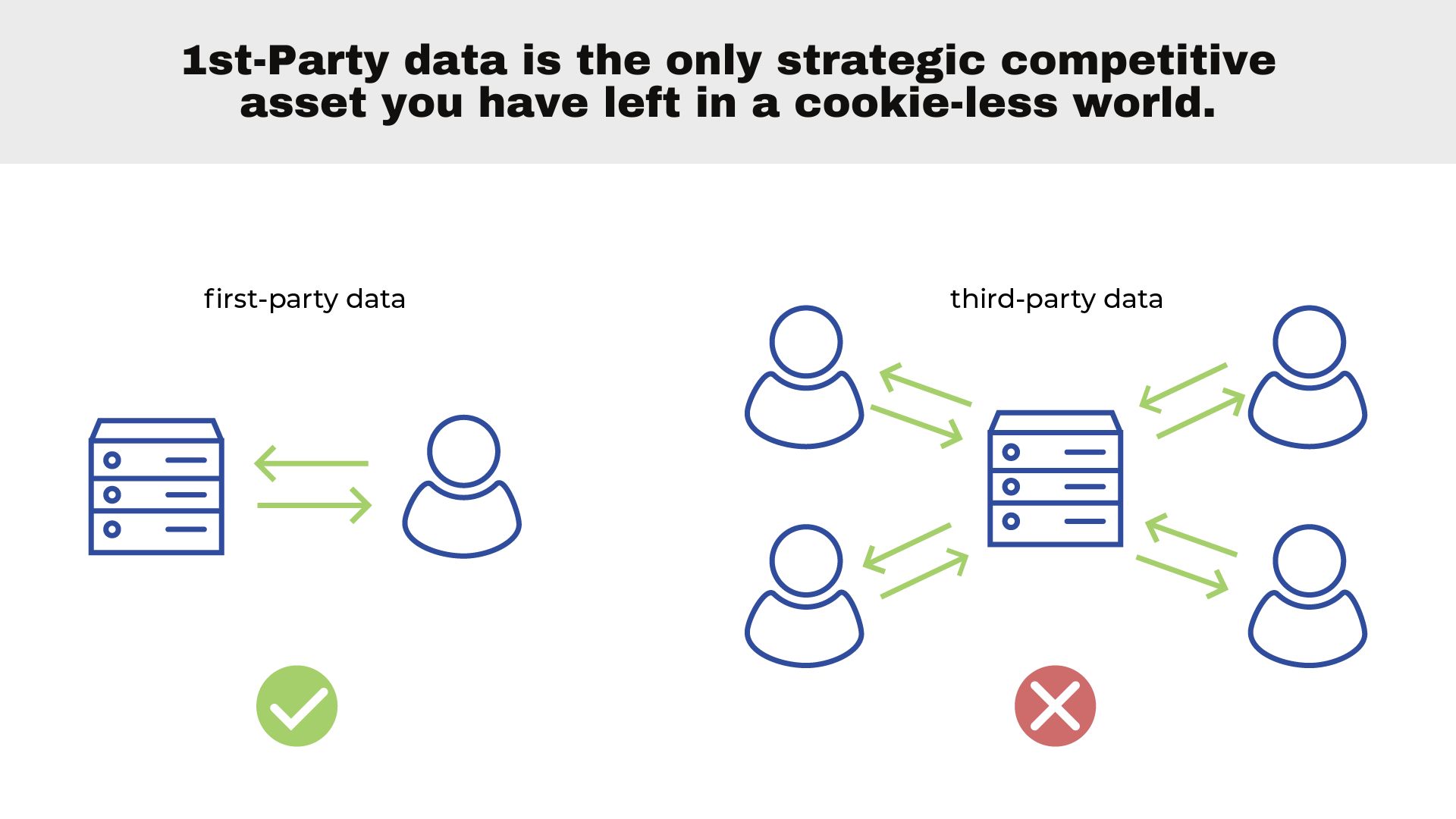We may as well kiss easy online advertising goodbye. In the upcoming cookie-less world, the only way forward is through First-Party Consumer Data and old-fashioned contextual advertising. When the Digital Tracking Doomsday of July 2023 hits and First-Party Data is the only strategic competitive asset you have left, will you be prepared? Or will you be left behind?
In a 2019 Opinion piece (https://www.nytimes.com/2019/06/19/opinion/facebook-google-privacy.html) appearing in the New York Times, Chief Executive Gabriel Weinberg of DuckDuckGo wrote, “The big ad-tech companies know how to sell ads without damaging privacy, but they choose not to.” Weinberg continues in his opinion article to predict a day of reckoning for the digital advertising industry. He described growing frustrations in public sentiment with the way individuals perceive how their online data is captured, manipulated, and leveraged against users through 3rd-Party Cookies. His predictions have proven true.
It didn’t take federal legislative change, either. Rather, the guillotine hangs above marketers’ heads because of the biggest names in tech. Google, Apple, Microsoft, and Mozilla — companies whose internet browsers together account for over 90% of all global internet usage — will default to blocking all 3rd-Party Cookies by July of 2023. These major players are making this shift voluntarily, but only after threats of legislation and large consumer concerns were raised against the lack of privacy options online.
There are massive, unanswered questions about how digital analytics and conversion tracking are going to work, but many people are also astutely asking, “What does this mean for digital advertising?”
In short, Digital Tracking Doomsday means advertisers and marketers turn back to the older modes of contextual advertising. As Google has shown with their new trial advertising system, called Topics (https://blog.google/products/chrome/get-know-new-topics-api-privacy-sandbox/), there will not be anything that can replace cookie-based tracking as we know it today. Instead, it’s high-time advertisers get more deliberate and more involved with advertising placements.
Here’s an old marketing adage: the best place to sell a beer is in a bar. The neon beer brand sign works because it’s situated in the optimal context for advertising that product. But how can marketers determine the best contexts for their products and services online? If I’m looking to sell vacation packages to Houston, where is the best “bar” for me to place my product?
Many of the most obvious advertising contexts are also the most expensive. You’d like to sell Houston vacations? Certainly, one valuable context for that ad is to target individuals searching on Google for “flights to Houston.” Good luck trying to outspend major airlines, vacation websites, and the biggest hotels as they all compete for that spot.
The Only Digital Asset You Have Left
If you want to be competitive, but you don’t want to waste money competing with the powerhouses in your industry, you need to fight smarter. Advertisers can no longer place their trust blindly in cookie-based algorithmic big data solutions in a cookie-less world. You have to get into the dirt of your consumer data to analyze and discover which verticals and contexts are going to perform best for your products. In short, 1st-Party data is the only strategic competitive asset you have left in a cookie-less world.

Your customers are already telling you when they convert, why they convert, and where they convert, but have you taken the time to invest in that data? Soon, you won’t have any choice — you’ll be pushed to examine closely your customer trends in order to stay afloat in the new digital landscape.
For many organizations, this is a daunting task. Small to medium businesses are especially under threat from larger corporations who have collected and organized 1st-Party data for years. However, businesses in this position are not without a lifeline, and there is still reason to be optimistic about this outlook. Gabriel Weinberg concluded his opinion piece with the following analogy about the upcoming shift in online tracking and privacy:
“I am reminded of the arguments made in the 1960s and ’70s about laws to reduce toxic emissions from cars. Companies profiting from less regulation lobbied against those laws, and yet, once they were enacted, Americans’ health improved, innovations such as the modern catalytic converter entered the market, and companies met the new emissions targets without catastrophic expense. If we enact strong privacy regulations, I believe we can be hopeful about the future of privacy.”
Gabriel Weinberg, What if We All Just Sold Non-Creepy Advertising?
You have an opportunity to invest in your 1st-Party data today. Given that we face a future where this data will be the only strategic competitive asset you have left, it’s worth making the investment sooner rather than later.
At this moment, you’re likely wondering how even to begin collecting 1st-Party Consumer Data in a meaningful and helpful way. Marketing Support Network can help. We’ve developed services and products to help organizations transition to 1st-Party Data only, and we bring the necessary marketing expertise to the table to help you begin wrapping your head around that data in a meaningful way. As the online privacy world changes, we all find ourselves up a creek. But only some of us have a paddle. Book a call with us if you’d like help setting your organization on the path to success in the new digital advertising world.







0 Comments